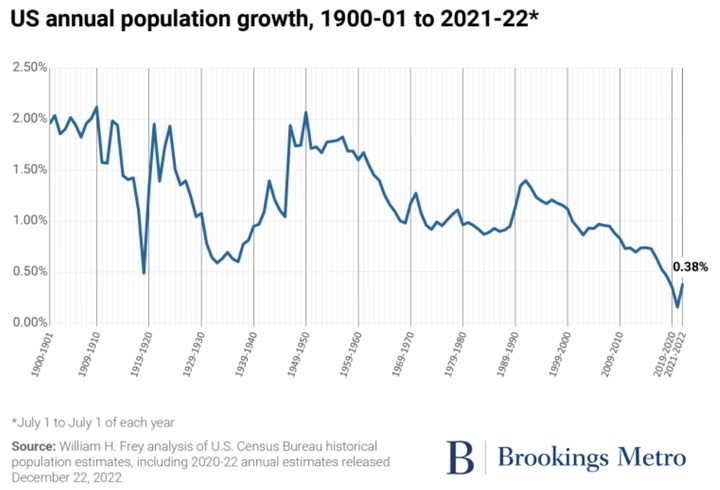The general fertility rate in the United States decreased by 3% from 2022, reaching a historic low. This marks the second consecutive year of decline, following a brief 1% increase from 2020 to 2021. From 2014 to 2020, the rate consistently decreased by 2% annually.
— from the Centers for Disease Control website, April 2024.
During the 30 years I’ve lived in Pagosa Springs, our local leaders have generally acted as if our population was going to multiply steadily and abundantly, long into the foreseeable future.
But this week, I’m kicking around some ideas, as to why Pagosa Springs may already be near its maximum size, as we approach 2025.
Within the next couple of years, the Pagosa Area Water and Sanitation District (PAWSD) might have access to triple the amount of raw water available now in 2024. The improvements include a new Snowball treatment plant, now under construction, and a proposed raw water pipeline from Stevens Reservoir to Lake Hatcher. PAWSD customers will be paying for these improvements long into the future, but the improvements will also last long into the future.
But access to raw water is not the only issue related to population growth in rural Colorado. We also have the issue of infrastructure.
Recently, PAWSD came until criticism following a discussion about the water system in the Elk Park subdivision. An oversized pipeline was engineered to eventually deliver water farther to the west, past Elk Park and extending into the Aspen Springs subdivisions, but that extension has never been built. As a result, PAWSD is required to dump millions of gallons of treated drinking water on a regular basis, to ensure that Elk Park water maintains a sufficient chlorine level.
As a result of previous planning and engineering, the Elk Park system is one of the more expensive parts of the PAWSD water system.
But Elk Park is not the only outlying subdivision that has been challenging for PAWSD to support, financially and physically. During recent discussions, the PAWSD board has tossed around the idea that the District should avoid promising water service to future subdivisions located a long distance from the community’s central core.
Adding the cost of infrastructure installation and maintenance to the inflated cost of regulations and development, and we have to wonder if Pagosa Springs will ever see another large subdivision built. It’s much easier to split large ranches into 35-acre parcels — ‘ranchettes’ — because parcels that size and larger do not have to meet subdivision regulations in Colorado.
But there are a couple of other factors to consider as we look into the crystal ball of Pagosa’s future.
As noted at the top of the page, the fertility rate in the U.S. — that is, the number of children borne by women of childbearing age — has been falling steadily. Since 2007, when the fertility rate was at its most recent high, the number of births has declined 17%, and the general fertility rate has declined 21%, according to a CDC report from August 2024.
This demographic change is not restricted to the U.S. Countries all around the globe are seeing their populations level off or decline. From a Pew Research Center article from last July:
The global population ballooned by about 1.7 billion people between 2000 and 2020. But growth was uneven around the world and, in some places, immigration played a key role.
In 14 countries and territories, in fact, immigration accounted for more than 100% of population growth during this period, meaning that populations there would have declined if not for the arrival of new immigrants. In 17 other countries, populations did decline between 2000 and 2020. But the decreases were smaller than they otherwise would have been due to growth in these countries’ immigrant populations.
As U.S. birthrates have declined… as in other countries… lifespans have lengthened. The old-age dependency ratio — the proportion of the senior population (65 and over) relative to the working-age cohort (18-64) — was 29 percent in 2023, up from 20 percent in 2000. This share is projected to rise to 37 percent by 2040.
In stark contrast, the old-age dependency ratio stood at just 8 percent in 1921, when Congress began passing legislation to limit immigration, in response to nationalist fears about immigrants. The restrictive National Origins Quotas Acts of 1921 and 1924 reshaped U.S. migration for nearly half a century.
But we have something very different going on, a hundred years later.
Over the past decade, American population growth — counting births and immigration — has declined to practically zero.

Significantly limiting immigration would shrink the U.S. labor pool, with effects on productivity, the health of programs such as Social Security and Medicare, and more. Limits on immigration would also translate into fewer U.S.-born children in immigrant families, and thus would have potent negative downstream effects on the size of America’s future workforce. These effects would be particularly strongly felt in states where the working-age and youth populations are already rapidly declining… Rust Belt states such as Michigan and Pennsylvania, for example…
But even in a small town like Pagosa Springs — already suffering from a shortage of willing workers — a drastic change in immigration could significantly impact the local economy.
Last year, Archuleta County saw 98 births, and 150 deaths. The previous year, we saw 104 births and 152 deaths.
Without incoming migration, Pagosa’s population would be on a slow downward spiral.
Are there other reasons why Pagosa Springs might be near its maximum size?

